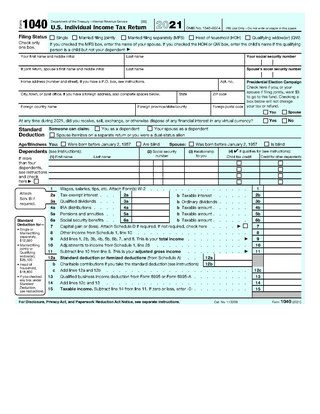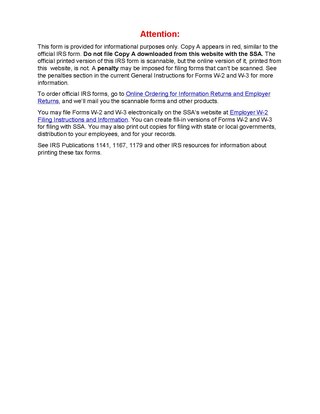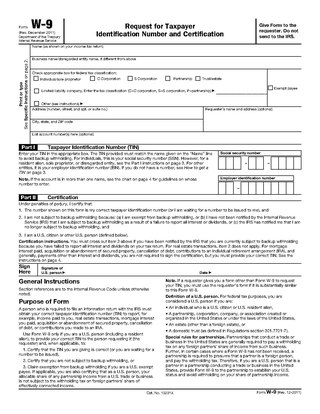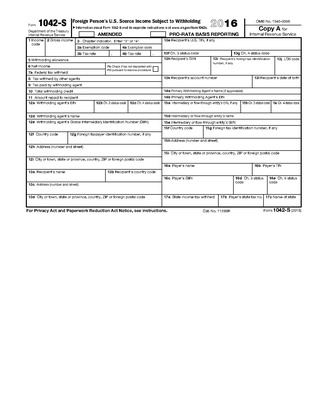Related Research Articles

Form 1040, officially, the U.S. Individual Income Tax Return, is an IRS tax form used for personal federal income tax returns filed by United States residents. The form calculates the total taxable income of the taxpayer and determines how much is to be paid to or refunded by the government.

The United States of America has separate federal, state, and local governments with taxes imposed at each of these levels. Taxes are levied on income, payroll, property, sales, capital gains, dividends, imports, estates and gifts, as well as various fees. In 2020, taxes collected by federal, state, and local governments amounted to 25.5% of GDP, below the OECD average of 33.5% of GDP.
A pay-as-you-earn tax (PAYE), or pay-as-you-go (PAYG) in Australia, is a withholding of taxes on income payments to employees. Amounts withheld are treated as advance payments of income tax due. They are refundable to the extent they exceed tax as determined on tax returns. PAYE may include withholding the employee portion of insurance contributions or similar social benefit taxes. In most countries, they are determined by employers but subject to government review. PAYE is deducted from each paycheck by the employer and must be remitted promptly to the government. Most countries refer to income tax withholding by other terms, including pay-as-you-go tax.
Tax returns in the United States are reports filed with the Internal Revenue Service (IRS) or with the state or local tax collection agency containing information used to calculate income tax or other taxes. Tax returns are generally prepared using forms prescribed by the IRS or other applicable taxing authority.
Three key types of withholding tax are imposed at various levels in the United States:
The United States War Revenue Act of 1917 greatly increased federal income tax rates while simultaneously lowering exemptions.

Form W-2 is an Internal Revenue Service (IRS) tax form used in the United States to report wages paid to employees and the taxes withheld from them. Employers must complete a Form W-2 for each employee to whom they pay a salary, wage, or other compensation as part of the employment relationship. An employer must mail out the Form W-2 to employees on or before January 31 of any year in which an employment relationship existed and which was not contractually independent. This deadline gives these taxpayers about 2 months to prepare their returns before the April 15 income tax due date. The form is also used to report FICA taxes to the Social Security Administration. Form W-2 along with Form W-3 generally must be filed by the employer with the Social Security Administration by the end of February following employment the previous year. Relevant amounts on Form W-2 are reported by the Social Security Administration to the Internal Revenue Service. In US territories, the W-2 is issued with a two letter territory code, such as W-2GU for Guam. Corrections can be filed using Form W-2c.
Tax withholding, also known as tax retention, pay-as-you-earn tax or tax deduction at source, is income tax paid to the government by the payer of the income rather than by the recipient of the income. The tax is thus withheld or deducted from the income due to the recipient. In most jurisdictions, tax withholding applies to employment income. Many jurisdictions also require withholding taxes on payments of interest or dividends. In most jurisdictions, there are additional tax withholding obligations if the recipient of the income is resident in a different jurisdiction, and in those circumstances withholding tax sometimes applies to royalties, rent or even the sale of real estate. Governments use tax withholding as a means to combat tax evasion, and sometimes impose additional tax withholding requirements if the recipient has been delinquent in filing tax returns, or in industries where tax evasion is perceived to be common.

The United States federal government and most state governments impose an income tax. They are determined by applying a tax rate, which may increase as income increases, to taxable income, which is the total income less allowable deductions. Income is broadly defined. Individuals and corporations are directly taxable, and estates and trusts may be taxable on undistributed income. Partnerships are not taxed, but their partners are taxed on their shares of partnership income. Residents and citizens are taxed on worldwide income, while nonresidents are taxed only on income within the jurisdiction. Several types of credits reduce tax, and some types of credits may exceed tax before credits. Most business expenses are deductible. Individuals may deduct certain personal expenses, including home mortgage interest, state taxes, contributions to charity, and some other items. Some deductions are subject to limits, and an Alternative Minimum Tax (AMT) applies at the federal and some state levels.

Form W-9 is used in the United States income tax system by a third party who must file an information return with the Internal Revenue Service (IRS). It requests the name, address, and taxpayer identification information of a taxpayer.

Taxpayers in the United States may face various penalties for failures related to Federal, state, and local tax matters. The Internal Revenue Service (IRS) is primarily responsible for charging these penalties at the Federal level. The IRS can assert only those penalties specified imposed under Federal tax law. State and local rules vary widely, are administered by state and local authorities, and are not discussed herein.
In tax administration in the United States, backup withholding is the sending of a portion of a payment to a tax authority instead of to the payee. This applies to the US IRS and the tax authorities of some states. For the IRS, it applies to some payments reported on Form 1099 which must be submitted to the IRS by financial institutions and businesses making certain income payments. Factors that necessitate backup withholding include:
- Incorrect taxpayer identification number (TIN)/ITIN/ATIN on Form W-9
- An IRS backup withholding order
- Certain types of payments
The United States Internal Revenue Service (IRS) uses forms for taxpayers and tax-exempt organizations to report financial information, such as to report income, calculate taxes to be paid to the federal government, and disclose other information as required by the Internal Revenue Code (IRC). There are over 800 various forms and schedules. Other tax forms in the United States are filed with state and local governments.
The Mortgage Forgiveness Debt Relief Act of 2007 was introduced in the United States Congress on September 25, 2007, and signed into law by President George W. Bush on December 20, 2007. This act offers relief to homeowners who would have owed taxes on forgiven mortgage debt after facing foreclosure. The act extends such relief for three years, applying to debts discharged in calendar years 2007 through 2009. With the Emergency Economic Stabilization Act of 2008, this tax relief was extended another three years, covering debts discharged through calendar year 2012. The relief was further extended until January 1, 2014, at Section 202 of the American Taxpayer Relief Act of 2012.
Tax information reporting in the United States is a requirement for organizations to report wage and non-wage payments made in the course of their trade or business to the Internal Revenue Service (IRS). This area of government reporting and corporate responsibility is continuously growing, carrying with it a large number of regulatory requirements established by the federal government and the states. There are currently more than 30 types of tax information returns required by the federal government, and they provide the primary cross-checking measure the IRS has to verify accuracy of tax returns filed by individual taxpayers.
In the United States, an income tax audit is the examination of a business or individual tax return by the Internal Revenue Service (IRS) or state tax authority. The IRS and various state revenue departments use the terms audit, examination, review, and notice to describe various aspects of enforcement and administration of the tax laws.
In the United States, Form 1099-MISC is a variant of Form 1099 used to report miscellaneous income. One notable use of Form 1099-MISC was to report amounts paid by a business to a non-corporate US resident independent contractor for services, but starting tax year 2020, this use was moved to the separate Form 1099-NEC. The ubiquity of the form has also led to use of the phrase "1099 workers" or "the 1099 economy" to refer to the independent contractors themselves. Other uses of Form 1099-MISC include rental income, royalties, and Native American gaming profits.

Forms 1042, 1042-S and 1042-T are United States Internal Revenue Service tax forms dealing with payments to foreign persons, including nonresident aliens, foreign partnerships, foreign corporations, foreign estates, and foreign trusts.

In the United States, Form 1099-K "Payment Card and Third Party Network Transactions" is a variant of Form 1099 used to report payments received through reportable payment card transactions and/or settlement of third-party payment network transactions. Form 1099-K is sent out to payees by a payment settlement entity if the gross payments exceed $600. Reportable payment card transactions do not include ATM withdrawals or checks issued in connection with a payment card.

In the United States, Form 1099-R is a variant of Form 1099 used for reporting on distributions from pensions, annuities, retirement or profit sharing plans, IRAs, charitable gift annuities and Insurance Contracts. Form 1099-R is filed for each person who has received a distribution of $10 or more from any of the above.
References
- ↑ "Comprehensive 1099 Guide -". taxsaversonline.com. 2021-12-16. Retrieved 2021-12-24.
- ↑ "How to Fill Out IRS Form 1099: A Step-by-Step Guide". www.levy.company. Retrieved 2024-02-21.
- ↑ Peek, Sean (22 April 2019). "W-2 vs. 1099 Contractors: Tax Differences Explained". United States Chamber of Commerce. Retrieved April 13, 2023.
- 1 2 "The Rise of The 1099 Economy: More Americans Are Becoming Their Own Bosses". Forbes .
- ↑ IRS instructions for form 1099-MISC, including a guide to what payments must be reported.
- ↑ "Topic 801 - Who Must File Information Returns Electronically". Internal Revenue Service. Retrieved January 24, 2016.
- ↑ "Instructions for Forms 1099-MISC and 1099-NEC (2022)". Internal Revenue Service. Retrieved April 13, 2023.
- ↑ "What Is a Form 1099?". efile.com. Retrieved January 9, 2016.
- ↑ "What If I Have to Issue a 1099 Form?". efile.com. Retrieved January 16, 2016.
- ↑ "What do I do with Form 1099-A?". TurboTax. Retrieved January 9, 2016.
- ↑ "2015 General Instructions for Certain Information Returns" (PDF). Internal Revenue Service. Archived from the original (PDF) on March 15, 2015. Retrieved October 4, 2016.
- ↑ "Instructions for Form 1099-B - Main Contents". Internal Revenue Service. Retrieved January 11, 2016.
- ↑ "Notice 2022-1: Instructions for Lenders and Loan Servicers Regarding Certain Discharged Student Loans" (PDF). Internal Revenue Service. December 21, 2021. Retrieved January 14, 2022.
- ↑ "Acquisition or Abandonment of Secured Property and Cancellation of Debt" . Retrieved May 3, 2017.
- ↑ "Instructions for Form 1099-CAP - Main Contents". Internal Revenue Service. Retrieved January 11, 2016.
- ↑ "Form 1099-DIV". Investopedia. Retrieved January 11, 2016.
- ↑ "Instructions for Form 1099-G - Main Contents". IRS. 2017. Retrieved May 3, 2017.
- ↑ "Instructions for Form 1099-H - Main Contents". Internal Revenue Service. Retrieved January 11, 2016.
- ↑ "Form 1099-INT". Investopedia. Retrieved January 11, 2016.
- ↑ "Filing Tax Form 1099-INT: Interest Income". TurboTax. 2015. Retrieved January 11, 2016.
- ↑ "Gig workers could end up losers in Covid relief bill". POLITICO. 5 March 2021. Retrieved 2021-03-12.
- ↑ Wang, Jim (November 16, 2011). "What Are the Different 1099 Tax Forms?" . Retrieved January 11, 2016.
- ↑ "1099 LTC - IRS Form Reporting Long Term Care Insurance Benefit Payments Understanding IRS Form 1099 LTC". American Association for Long-Term Care Insurance. Retrieved January 11, 2016.
- ↑ In tax years 1983-2019, this information was reported on Form 1099-MISC.
- ↑ "What is IRS Form 1099-OID?". 1099FIRE. Retrieved January 11, 2016.
- ↑ "Form 1099-PATR, Taxable Distributions Received From Cooperatives" . Retrieved January 11, 2016.
- ↑ "Instructions for Form 1099-Q - Main Contents". IRS. 2015. Retrieved May 3, 2017.
- ↑ "Form 1099-R". Investopedia. Retrieved January 11, 2016.
- ↑ "Instructions for Form 1099-S - Main Contents" . Retrieved January 11, 2016.
- ↑ "Instructions for Forms 1099-SA and 5498-SA - Main Contents". IRS. 2016. Retrieved May 3, 2017.
- ↑ "How can I get a form SSA-1099/1042S, Social Security Benefit Statement?". Social Security Administration. Retrieved January 9, 2016.
- ↑ "Form RRB 1099 Tax Statement General Information". U.S. Railroad Retirement Board. Retrieved January 11, 2016.
- ↑ "Publication 575: Pension and Annuity Income, For use in preparing 2015 Returns" (PDF). Internal Revenue Service. Retrieved January 11, 2016.
- ↑ "Internal Revenue Service". The Guymon Herald (Guymon, Oklahoma). February 17, 1918. p. 1.
- ↑ "$578,304 Decrease in W.R.&E. Surplus: Strike, Higher Tax and Increase in Materials and Labor Cost Cut Net Income." The Washington Post. January 20, 1918. p. RE4. "A special blank for use of employers in reporting to collectors of Internal revenue annual salaries paid in 1917 in excess of $800 has been prepared by the bureau of internal revenue throughout the country. The blank is form 1099, and Washington business organizations can procure it by applying at the Treasury. Under the war revenue act of 1917 employers are no longer required to withhold the 2 per cent income tax from salaries, except in the case of non-resident aliens, but must advise the internal revenue collectors of all salaries paid which amount to $800 or more."